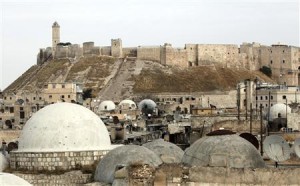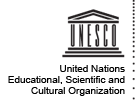This week we explored the destruction of artifacts central to different cultures at the hands of war, as well as the archaeology of warfare. What better way to cut down an enemy than to extinguish what represents their past? One of our readings stated, “The relevance of the past to the present is evident in many facets of daily life…The past is a means through which identities–whether ethnic, national, religious, or other–can be formed and reinforced in the present.”
We looked at many examples that spanned from Iraq, India to Syria. I wanted to learn more into the specifics about Syria and found an article that examined the specific treasures that are threatened by conflict in this area, as well as the efforts to combat this large destruction in Syria.
The so-called most important artifacts to go missing, the bronze statue, dated back 2,000 years, which was put on Interpol’s ‘Most Wanted’ list, as well as a marble artifact stolen from a museum. Many archaeological sites have also been a target. Looting and illegal excavations have increased dramatically during this time of conflict. Buildings and markets have also been subject to harm. Specifically, seven old markets in Aleppo were practically destroyed by a large fire. Army shelling has been seen to damage ancient homes. Syria treasures have become a battleground for Middle Eastern conflict. The head of Syria’s iniquities and museums, Maamoun Abdulkarim, noted this while talking about looters, “If they reach these places then my conviction is that Syria would no longer exist…It would signal the end of the end…Syria as we know it would then be over.”
As a result of this looming truth, many actions have been taken to protect Syria’s treasures. All Syrian museums were stripped of all artifacts, besides ones that were too troublesome to move out. Abdulkarim said that, “They are in effect empty halls…” They were sent to specialist warehouses to prevent any danger. UNESCO, the cultural UN body, shared their concern about the Six World Heritage Sites (places listed as having special cultural or physical significance) and reached out to help protect ancient treasures of Syria. They are even helping tracking down specific artifacts such as eighteen mosaic panels smuggled to Lebanon.
Some particularly inspiring examples are the acts of citizens to protect artifacts. Some examples of this are the work of a local community in the town of Maarat al-Noman to ensure famous mosaic portraits were kept safe as well as an instance in Hama where neighborhood youths defended their local museum’s Roman and Byzantine statues until they were safe from looters. Some looting has also simply ceased due to the lack of success in finding goods.
“God forbid, then we are approaching the start of the tragic demolition of our past and future.”
Further Reading:
Amid the devastation and danger of civil war, Syrian archaeologists and activists are risking their lives in the battle against looting: http://news.nationalgeographic.com/news/2014/09/140903-syria-antiquities-looting-culture-heritage-archaeology/
Syria, graced with thousands of historic sites, is seeing its cultural heritage vandalized looted and destroyed by war – but volunteers are doing what they can to document the damage and save the country’s cultural identity from obliteration (as seen through photographs): http://www.bbc.com/news/magazine-28191181
Links to photographs:
Photograph one, Aleppo: http://www.reuters.com/article/2013/02/20/uk-syria-crisis-antiquities-idUSLNE91J01C20130220
Photograph two, markets: http://www.bbc.co.uk/news/in-pictures-19777468
Photograph three, UNESCO: http://en.unesco.org
Sources:
Al-Khalidi, Suleiman. “Syrian Violence Threatens Ancient Treasures.” Reuters. February 20, 2013. Accessed November 24, 2014. http://www.reuters.com/article/2013/02/20/uk-syria-crisis-antiquities-idUSLNE91J01C20130220.
Bernbeck, Reinhard, and Susan Pollock. “Ayodhya, Archaeology, and Identity.” JSTOR. January 1, 1996. Accessed November 24, 2014. http://www.jstor.org/stable/2744239.




Like the Cardiff Giant (discussed in Lydia’s post), the role of material culture in warfare breaks down boundaries between the intangible and the tangible, the conceptual and the material. In order to manipulate and control the ideological meaning carried by cultural artifacts, many resort to physically destroying them. The material existence and cultural meaning of such objects seem to be inextricably tied. With this in mind, in instances where irreplaceable artifacts are destroyed, can cultural history and identity live on without material carriers? What can be done to mitigate this loss?
In warfare, I think people resort to destroying their enemy’s cultural artifacts that define that group’s identity. This is used as a way to hurt the group deeply by denouncing that group’s past–one of the most important thing that characterizes a person or group. With this in mind, however, I believe that cultural history and identity can continue to live on, despite the removal of a material culture. As long as there are people that can pass on the ideas and stories that their now destroyed cultural objects once carried, there will be a continuation of that group’s original identity. In order to mitigate this loss, I think the same idea can be applied; make sure that the surviving people who remember the meaning behind destroyed cultural artifacts share with other people, or even write down, the messages and cultural significance that the artifact originally conveyed.